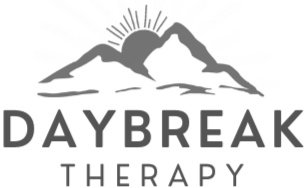Elements of Recovery from Religious Trauma, Part 1
One of the most poignant moments I had as a beginning therapist was during a supervision meeting. I felt unsure of how to help a particular client and I asked my supervisor with some angst, “How do I select the best therapy modality to help this client?”
“There are many paths of healing.”, she said to me with calm reassurance.
That was a lightbulb moment for me and I’ve never let go of the significance of that message. We tend to gravitate towards cures and solution focused relief for our problems which is a helpful instinctual drive. But healing often comes slowly, in layers of all kinds. My own therapist would often remind me that it happens, “Little by little.”
This applies to the elements of recovery from religious trauma as well. There are many diverse ways that people find their way through the process. As you navigate your own recovery, some of the following elements may resonate with you and others will not be relevant to your needs. And that is ok- because there are many paths of healing.
Gaining Outside Information
Seeking outside information is a common element of recovery from religious trauma.
High control religious groups often discourage members from accessing particular information sources. This can include any negative information about the group leadership, the group’s ideology, or anything that contrasts with the group claims at authority. Getting outside information means accessing restricted information and perspectives that were not common knowledge to members inside of the group.
Some types of information may include:
Learning about coverups and harms perpetrated by religious leadership
Finding out about inconsistencies and errors in religious texts that were given absolute authority over members
Learning about the coercive control tactics used as manipulation in my many high control religious groups
Learning about alternative worldviews, religious orientations, and philosophies
Learning new info about the history and origin of the religious group’s ideas
Comparison of your group’s claims to other similar and competing claims
Researching about human psychology, and human development as it pertains to religiousity
Often people get access to this information through internet research, books, podcasts, documentaries, social media accounts, and former group members.
The Process of Information Seeking for Religious Recovery
The process of information seeking can feel like a flood of adrenaline marked with urgency and intense focus. Uncovering new information can increase a person’s sense of autonomy and independence. This process can also bring intense anger. People may learn ways that their group misled them about facts and restricted important information. They may also feel anger towards themselves for the period of time during which they accepted information without questioning.
Some people during this period feel an insatiable drive to learn more and find it hard to focus on other aspects of their life. It can feel overwhelming to sift through all of the information available like drinking from a firehose.
If this descriptions sounds like an experience you are currently having, it may be helpful to know that others have also experienced this, too. Information seeking is a normal, expected part of the recovery process for many. It can last for many months or years- but often the intensity and frequency of information seeking gets more spread out and less intense over time. The beginning may feel like endless waves - intense and back to back- while later these waves of information seeking may come and go with more pauses in between. As time goes on, other interests and aspects of the recovery process may unfold.

